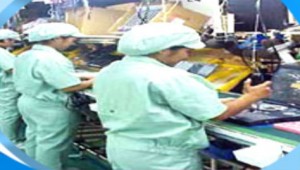
The private sector is still not investing enough in the Philippines despite the country’s improving macroeconomic fundamentals, according to the Philippine Institute for Development Studies.
MANILA, Philippines—The private sector is still not investing enough in the Philippines despite the country’s improving macroeconomic fundamentals and has yet to maximize income opportunities from an expanding economy, according to the Philippine Institute for Development Studies (PIDS).
In one of its latest papers, state-owned PIDS said private firms had to step up by betting more on the Philippine economy to help make it even more competitive.
Despite a noticeable increase in investments last year, PIDS said the investment rate in the Philippines remained low compared with those in neighboring countries. This is despite the fact that the Philippines posted one of the fastest growth rates in Asia last year.
“The private sector has to display more ‘animal spirits’ in order to raise the investment rate,” PIDS said in its “Economic Policy Monitor” released last week.
The investment rate—the ratio of fixed investment to gross domestic product—in the Philippines stood at 19.6 percent last year. This was up from 19.1 percent in 2011 but still down from 20.1 percent in 2010.
In other emerging economies in Asia, the investment rates are well above 20 percent.
“The low investment rate has historically been a major constraint to economic development and transformation. The data indicate that there has been no significant advancement toward sustainable economic growth,” PIDS said.
In 2012, the Philippines became one of the fastest-growing economies in Asia by registering a growth of 6.6 percent.
This was higher than most projections and was above the government’s target of 5 to 6 percent.
PIDS said factors that drove last year’s growth rate were government spending, consumption supported by remittances, and a modest rise in investments.
It said investments need to rise by a much faster pace so that the robust growth of the economy will be sustained over the medium to long term and eventually translate into poverty reduction.
PIDS said that the Philippines has to grow above 7.5 percent this year to prove that its encouraging performance last year is sustainable.
To achieve such a growth rate, the economy should be driven more by investments rather than consumption, it said.
“A growth rate of between 6 and 7.5 percent can be labeled as a region of uncertainty. If growth falls below 6 percent in 2013, it can be safely concluded that the performance in 2012 was a just a temporary blip,” PIDS said.
“On the other hand, a growth rate higher than 7.5 percent is a sign that the economy had made a breakthrough in 2012,” it added.